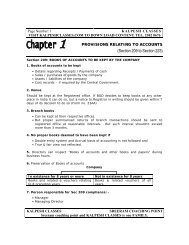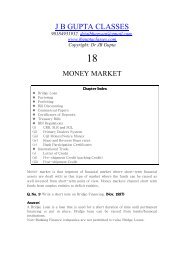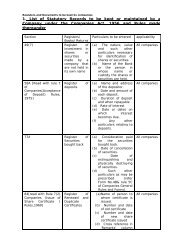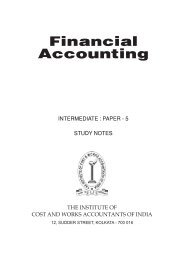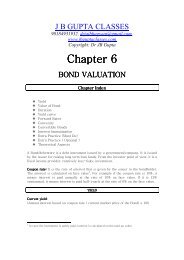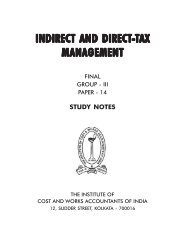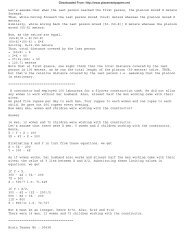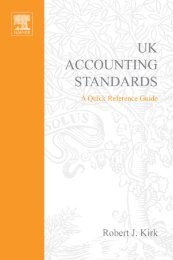Valuation for Financial Reporting - CMA Ankur Pandey
Valuation for Financial Reporting - CMA Ankur Pandey
Valuation for Financial Reporting - CMA Ankur Pandey
- No tags were found...
Create successful ePaper yourself
Turn your PDF publications into a flip-book with our unique Google optimized e-Paper software.
26 <strong>Valuation</strong> <strong>for</strong> <strong>Financial</strong> <strong>Reporting</strong>Per the FASB, intangible assets are distinguished from goodwill. The FASBprovides specific guidance <strong>for</strong> the identification of intangible assets such that any assetnot so identified would fall into the catch-all category of goodwill.Each of these definitions is correct and, in its venue, appropriate, but the nature ofintangible assets requires more explanation. Some intangible assets are a subset ofhuman capital, which is a collection of education, experience, and skill of a company’semployees. Structural capital is distinguished from human capital but also includesintangible assets such as process documentation and the organizational structureitself, which is the supportive infrastructure provided <strong>for</strong> human capital andencourages human capital to create and leverage its knowledge. Intangible assetsare the codified physical descriptions of specific knowledge that can be owned andreadily traded. Separability and transferability are fundamental prerequisites to themeaningful codification and measurement of intangible assets. Further, intangibleassets receiving legal protection become intellectual property, which is generallycategorized into five types: patents, copyrights, trade name (-marks and -dress), tradesecrets, and know-how.WHY ARE INTANGIBLE ASSETS DIFFICULT TO MEASURE?The Brookings Task Force succinctly described measurement difficulties when itsaid:Because one cannot see, or touch, or weigh intangibles, one cannot measure themdirectly but must instead rely on proxies, or indirect measures to say something abouttheir impact on some other variable that can be measured. 4Over the years, the FASB has sought to change the historical cost focus ofmeasurement. Apart from SFAS No. 157, there are approximately three dozenstatements that require consideration of fair value. 5 Clearly, the identification andmeasurement of intangible assets is required. How is this done?THE NATURE OF INTANGIBLE ASSETSOpportunity cost is a fundamental concept of finance and can be defined as the cost ofsomething in terms of an opportunity <strong>for</strong>egone. Many finance courses focus on theopportunities available to utilize tangible assets, with the goal of applying thosetangible assets to the opportunity with the highest return. Opportunities not selectedcan be viewed as returns <strong>for</strong>egone. The physical reality is that tangible assets can onlybe in one place at one time. Professor Lev looked at the physical, human, and financialassets (all considered tangible) as competing <strong>for</strong> the opportunity. In a sense, theseassets are rival or scarce assets ‘‘...in which the scarcity is reflected by the cost ofusing the assets (the opportunity <strong>for</strong>egone).’’ 6



